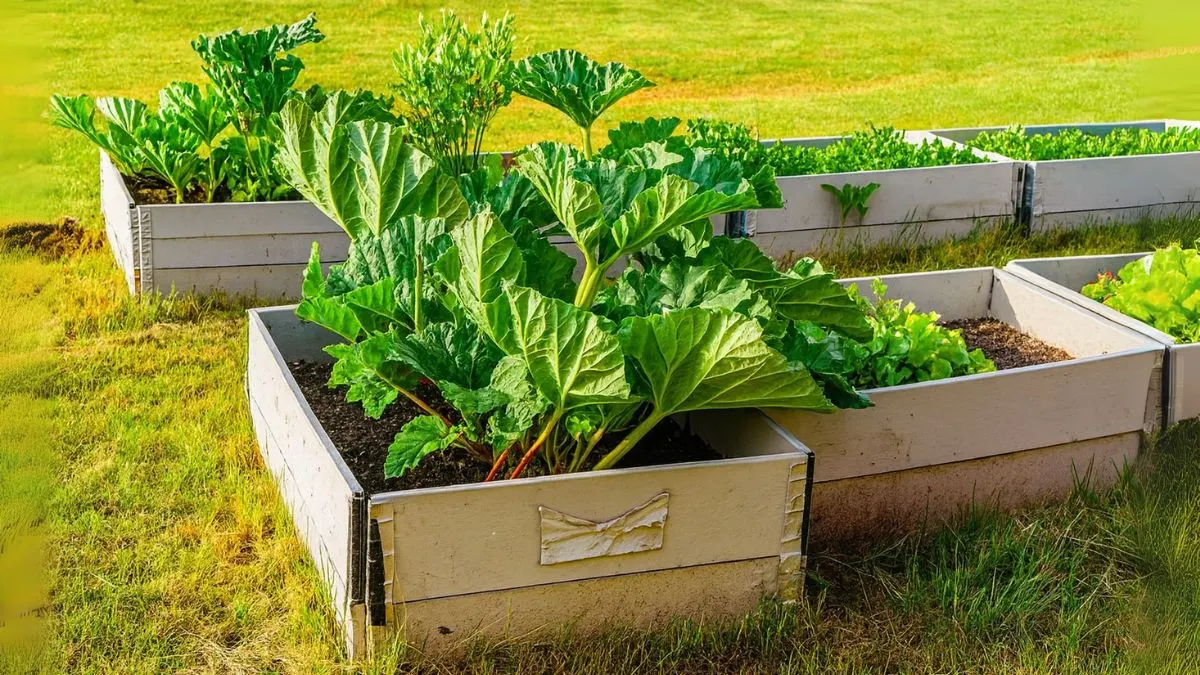When we think about vegetables, most of us imagine seasonal produce that needs to be sown, harvested, and replanted every few months. But what if you could enjoy fresh, homegrown vegetables year after year without constantly replanting? That’s where perennial vegetables step in.
In India, where food traditions are deeply rooted in sustainability, many households already enjoy perennials like drumstick, amaranth (chekkurmanis), sweet potato, moringa, and okra. These vegetables not only thrive in diverse climates but also provide nutritional and medicinal benefits.
I still remember visiting my grandmother’s garden, where the moringa tree stood tall and gave us drumstick pods for curries all year long. That was my first real encounter with the power of perennial gardening.
What Are Perennial Vegetables?

Unlike annual crops that complete their lifecycle within a season, perennial vegetables regrow year after year once planted. They demand less maintenance, adapt to soil conditions over time, and often resist pests naturally.
For small home gardens and kitchen setups, these vegetables are a blessing—saving space, time, and resources while giving back nutrition-packed harvests consistently.
Why Perennial Vegetables Matter in India
India’s tropical and subtropical climate makes it ideal for cultivating long-lasting greens. Here’s why more people are turning towards them:
- Sustainability: They reduce dependency on seasonal farming.
- Nutrition: Packed with vitamins, minerals, and antioxidants.
- Affordability: Once planted, they keep producing with minimal costs.
- Climate Adaptability: Resilient to changing weather patterns.
Also Read: Kevda Plant Benefits: From Headaches to Holy Rituals
Top Perennial Vegetables in India
1. Drumstick (Moringa oleifera)
The humble drumstick is a staple in Indian kitchens. From the pods in sambhar to moringa leaves in stir-fries, it’s loved for its versatility.
- Thrives in hot, dry climates.
- Rich in iron, calcium, and Vitamin C.
- Grows well in backyards with minimal care.
Personal tip: We used to dry moringa leaves into powder and add it to dals and chapatis—a simple trick for boosting nutrition daily.
2. Amaranth (Chekkurmanis)
Amaranth (chekkurmanis) is often called a superfood. Its leaves are eaten as greens, and the plant survives for multiple years when maintained properly.
- Tolerates both heat and humidity.
- Excellent source of protein, magnesium, and dietary fiber.
- Can be grown in pots or open soil with equal ease.
Its bright green leaves also add a pop of color to kitchen gardens, making them both ornamental and edible.
Also Read: Crocuses Varieties That Will Bloom Before Winter’s Over
3. Sweet Potato (Ipomoea batatas)
Yes, sweet potato is more than just a root vegetable. Its leafy greens are perennial and can be harvested regularly.
- Roots are rich in beta-carotene and Vitamin A.
- Leaves are edible and nutrient-packed.
- Once planted, the vine spreads and keeps producing without much effort.
This makes sweet potato one of the most rewarding perennials for Indian households.
4. Moringa
Although moringa is technically the same plant as drumstick, its leaves, pods, flowers, and even seeds are so valuable that it deserves a separate mention.
- Known as the “miracle tree.”
- Leaves are dried into powders for health supplements worldwide.
- Regular pruning ensures continuous growth and leaf production.
In global markets like the USA and Canada, moringa is now sold as a premium superfood, but in India, it has been part of daily diets for centuries.
5. Okra (Lady’s Finger)
Many don’t realize that okra can also behave like a perennial vegetable in warm climates.
- Produces fruits for multiple seasons if cared for well.
- Needs consistent sunlight and fertile, well-drained soil.
- Popular in dishes across India—from bhindi masala to sambhar.
Okra is also a pollinator-friendly plant, encouraging bees and butterflies into your garden.
Also Read: Plant These Stunning Ixia Bulbs Now for a Summer Garden
Nutritional Highlights of Perennial Vegetables
Vegetable |
Key Nutrients |
Lifespan/Harvest Cycle |
Best Growing Conditions |
Drumstick |
Iron, calcium, Vitamin C |
Year-round pods & leaves |
Hot, dry climates |
Amaranth |
Protein, fiber, magnesium |
Continuous leafy harvest |
Humid/tropical conditions |
Sweet Potato |
Vitamin A, beta-carotene |
Annual tubers + perennial leaves |
Loose, fertile soil |
Moringa |
Antioxidants, Vitamin B & C |
Multi-year leaves, pods, flowers |
Sunny areas, minimal watering |
Okra |
Fiber, Vitamin C, folate |
Seasonal fruit, extended if pruned |
Full sun, well-drained soil |
How to Start Growing Perennial Vegetables
- Choose climate-friendly options – Drumstick and moringa love heat, while amaranth tolerates humidity.
- Prepare the soil – Ensure fertility with compost and organic matter.
- Water smartly – Avoid overwatering; most perennials adapt to dry spells.
- Prune regularly – Extends the lifespan and boosts production.
- Experiment in containers – Plants like amaranth and okra grow well in pots for urban gardeners.
Global Appeal of Perennial Vegetables
Though deeply rooted in Indian traditions, perennial vegetables like drumstick and moringa are gaining popularity worldwide. In Canada and the USA, moringa powders, sweet potato greens, and amaranth seeds are sold in health food stores. This shows that our traditional foods are now being rediscovered as future superfoods.
From the nutrient-dense drumstick to the versatile sweet potato, India’s perennial vegetables are proof that sustainable, healthy eating can also be simple. With minimal effort, they provide continuous harvests, reduce food wastage, and improve soil health.
So, whether you live in a spacious farmhouse or a small city apartment, adding perennials to your garden will ensure year-round greenery and nutrition. Start small, nurture your plants, and you’ll be surprised how these timeless vegetables transform your kitchen and lifestyle.






